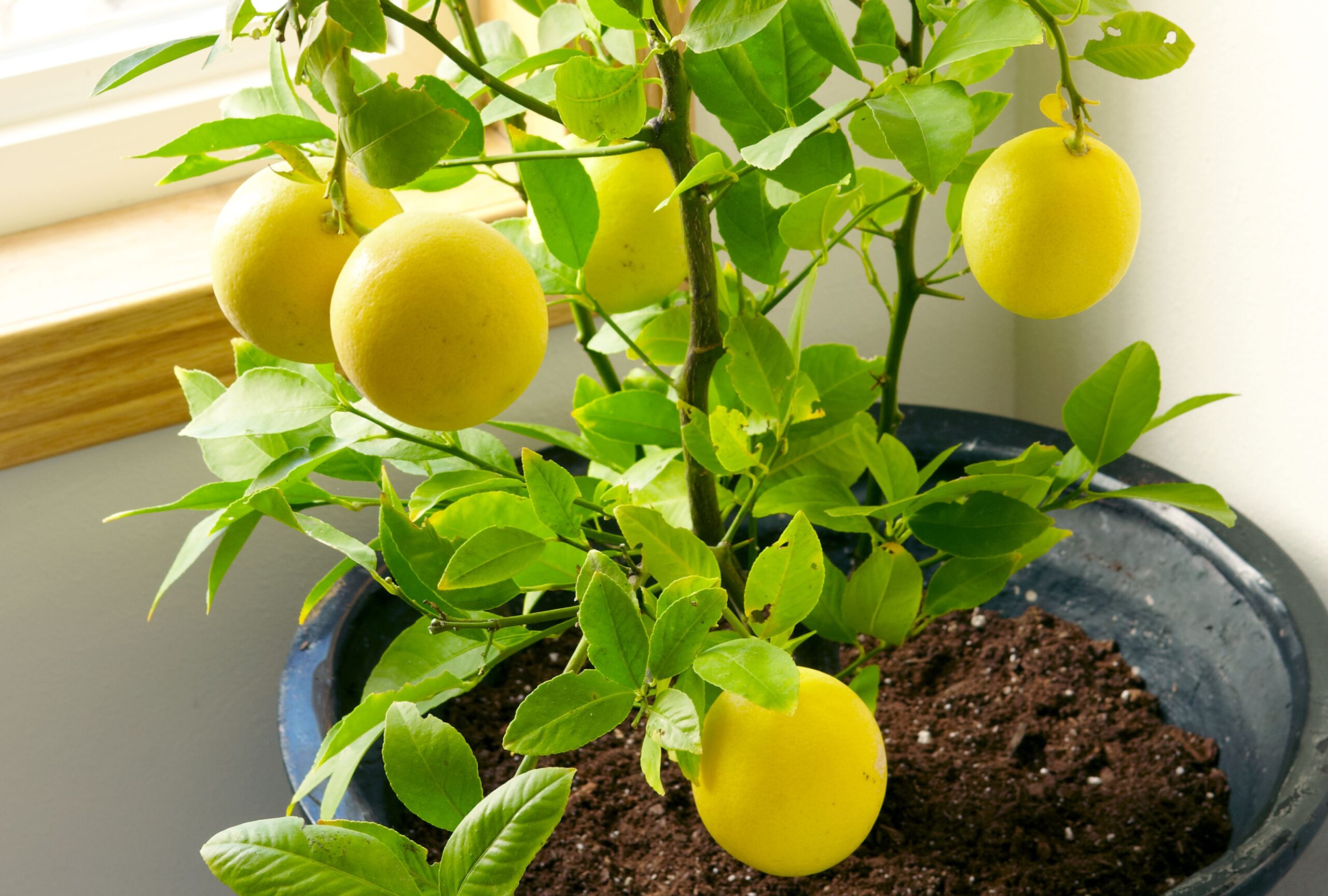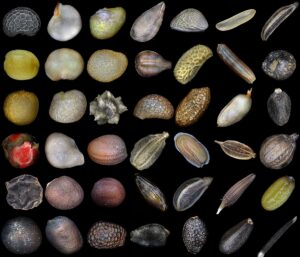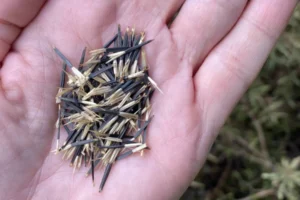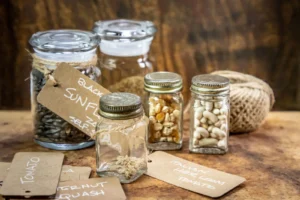How to Grow a Lemon Tree From Seed: A Complete Guide
Growing a lemon tree from seed is a rewarding project that allows you to witness the entire life cycle of this fragrant citrus plant. While seed-grown lemon trees take longer to produce fruit than grafted varieties, the journey from tiny seed to blooming tree offers immense satisfaction and a deeper connection to your garden. This guide will walk you through every step of growing lemon trees from seeds in various settings—from indoor containers to outdoor plots—and help you nurture these sun-loving plants into productive trees.
Why Grow Lemon Trees From Seed?
Before diving into the how-to, it’s worth understanding what makes growing lemons from seed appealing:
- Cost-effective: Seeds are essentially free when you purchase lemons
- Educational: Perfect project for teaching children about plant life cycles
- Genetic diversity: Seed-grown trees contribute to preserving citrus genetic diversity
- Organic option: Complete control over growing conditions and treatments
- Personal achievement: Satisfaction of growing a tree from scratch
According to the USDA Agricultural Research Service, growing plants from seeds is one of the most fundamental ways to connect with nature and understand plant biology.
What to Expect When Growing Lemon Trees From Seed
While rewarding, growing lemon trees from seed requires patience. Here’s what you should know:
- Seed-grown lemon trees typically take 3-6 years to produce fruit
- The fruit may differ from the parent lemon in flavor and characteristics
- Growth is slower than with grafted nursery trees
- Your tree will develop its own unique traits
Getting Started: Selecting and Preparing Seeds
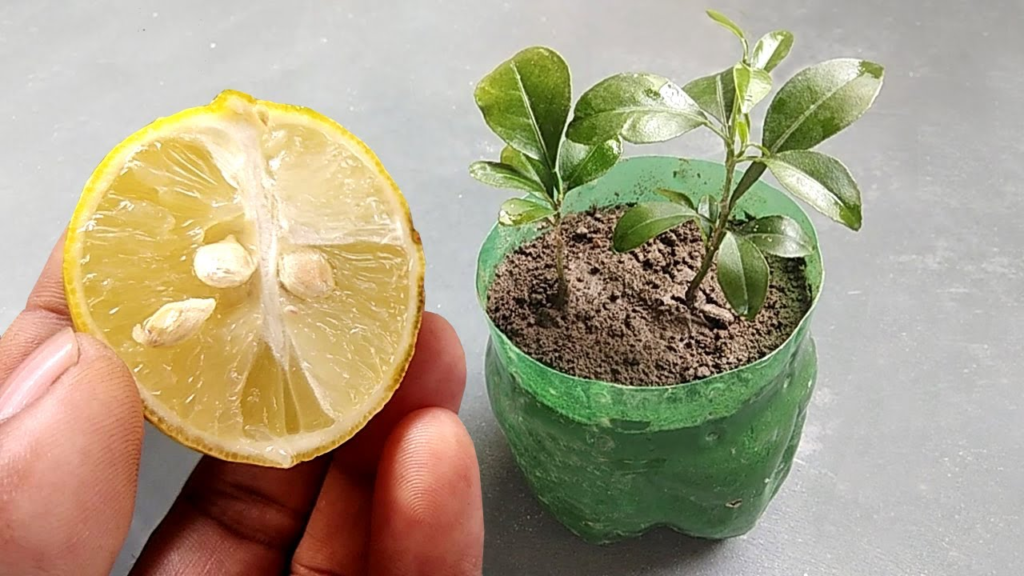
Choosing the Right Lemons
Your journey begins with selecting appropriate lemons for seed harvesting:
- Organic lemons are preferred (conventional lemons may be treated with growth inhibitors)
- Choose fully ripe, healthy lemons
- Meyer lemons are particularly suited for home growing due to their compact size
- Eureka and Lisbon varieties also work well for seed propagation
Extracting and Preparing Seeds
To give your lemon seeds the best chance of germination:
- Cut open a ripe lemon and extract several seeds
- Rinse the seeds thoroughly to remove all pulp and sugar (which can promote fungal growth)
- Select plump, intact seeds—discard any that appear damaged
- Important: Plant immediately or keep seeds moist as they should not be allowed to dry out
Germination Methods for Lemon Seeds
You can choose from several effective methods to germinate your lemon seeds:
Method 1: Direct Soil Planting
- Fill small pots (3-4 inches) with sterile seed-starting mix
- Plant seeds ½ inch deep
- Water thoroughly but gently
- Cover with plastic wrap to create humidity
- Place in warm location (70-80°F)
- Keep soil consistently moist
- Expect germination in 2-3 weeks
Method 2: Paper Towel Germination
- Moisten paper towels
- Place seeds between layers
- Put in sealed plastic bag
- Check daily for germination
- Transfer sprouted seeds to soil
- This method allows you to see germination progress
Method 3: Pre-Soaking Technique
- Soak seeds in lukewarm water for 24 hours
- This softens the seed coat and speeds germination
- Plant pre-soaked seeds following Method 1
Growing Environments: Where to Grow Your Lemon Tree
Lemon trees can thrive in various settings with proper care. Here’s how to set up different growing environments:
Indoor Container Growing
Perfect for cold climates or limited space:
- Select a container with excellent drainage holes
- Use high-quality citrus soil mix
- Place near south-facing window
- Supplement with grow lights in winter if needed
- Maintain indoor humidity (mist or use humidifier)
- Room temperature should be 65-75°F
- Protect from drafts and heating vents
Home Garden Growing
For temperate climates (USDA zones 9-11):
- Select a sheltered, south-facing location
- Ensure 8+ hours of direct sunlight
- Provide wind protection
- Allow 12-25 feet of space for mature trees
- Prepare soil with organic matter for drainage
- Consider proximity to buildings for cold protection
Plot or Orchard Growing
For larger-scale growing:
- Space trees 12-25 feet apart
- Create rows with proper orientation for sunlight
- Prepare soil with deep organic matter incorporation
- Install irrigation systems
- Consider windbreaks between rows
- Plan for equipment access if needed

Essential Care for Young Lemon Seedlings
The first year is critical for establishing healthy lemon trees:
Watering Schedule
Proper moisture is crucial:
- Keep soil consistently moist but never soggy
- Allow top inch to dry between waterings
- Reduce frequency in winter months
- Increase during hot weather
- Morning watering is preferable
Light Requirements
Lemon seedlings need abundant light:
- Minimum 8 hours of bright light daily
- South-facing window indoors
- Rotate pot weekly for even growth
- Supplement with grow lights if window light is insufficient
- Protect from intense afternoon sun in hot climates
Temperature Considerations
Lemon seedlings have specific temperature needs:
- Ideal growing temperature: 65-80°F
- Minimum temperature: 50°F (damage occurs below this)
- Protect from cold drafts
- Use heat mats for germination if room is cool
- Apply mulch for outdoor trees in marginal zones
Developmental Timeline and Milestones
Understanding the growth stages helps manage expectations:
| Growth Stage | Timeline | Key Observations | Care Focus |
|---|---|---|---|
| Germination | 2-3 weeks | First sprout emergence | Maintain humidity and warmth |
| Early seedling | 1-3 months | First true leaves appear | Light fertilizer introduction |
| Juvenile growth | 3-12 months | Branching begins | Pruning for structure |
| Adolescent tree | 1-3 years | Reached 2-3 feet in height | Pot upgrades, nutrient management |
| Mature (non-fruiting) | 3-5 years | Adult foliage, potential flowering | Balanced fertilization |
| Fruiting phase | 5-7 years | Flower and fruit production | Fruit-specific nutrients |
Soil and Fertilization Requirements
Soil Composition
The right soil makes all the difference:
- pH level: 5.5-6.5 (slightly acidic)
- Well-draining structure is crucial
- For containers: use citrus-specific potting mix
- For garden: amend soil with organic matter and sand
- For plots: test soil and amend according to results
Fertilization Schedule
Feed your tree appropriately:
- Begin fertilizing when seedling reaches 3-4 inches
- Use half-strength citrus fertilizer monthly during growing season
- Increase to full strength after first year
- Switch to balanced NPK ratio (like 8-8-8)
- Add micronutrients, especially iron, manganese, and zinc
- Reduce fertilization in winter
Common Challenges and Solutions
Pest Management
Watch for these common lemon tree pests:
- Spider mites: Visible webbing, stippled leaves. Treat with neem oil or insecticidal soap
- Aphids: Clustered on new growth. Control with strong water spray or neem oil
- Citrus leaf miners: Tunneling in leaves. Remove affected leaves, use organic sprays
- Scale insects: Crusty bumps on stems. Remove with cotton swab dipped in alcohol
Disease Prevention
Common diseases to watch for:
- Citrus canker: Water-soaked lesions. Remove affected parts, avoid overhead watering
- Root rot: Wilting despite moist soil. Improve drainage, reduce watering
- Nutrient deficiencies: Yellow leaves with green veins (iron), yellow edges (magnesium). Adjust fertilization
Transitioning Your Lemon Tree
From Indoor to Outdoor
For trees started indoors:
- Gradually acclimate tree to outdoor conditions (“hardening off”)
- Start with 1-2 hours in dappled shade
- Increase exposure over 1-2 weeks
- Monitor for stress signs
- Choose final location carefully
Container to Ground
When moving from pot to garden:
- Wait until tree is 1-2 years old
- Choose planting time in spring or fall
- Prepare planting hole twice the width of root ball
- Gently loosen root ball before planting
- Keep soil level consistent with container level
- Water thoroughly after transplanting
Advanced Care for Established Trees
Once your lemon tree is established, focus on:
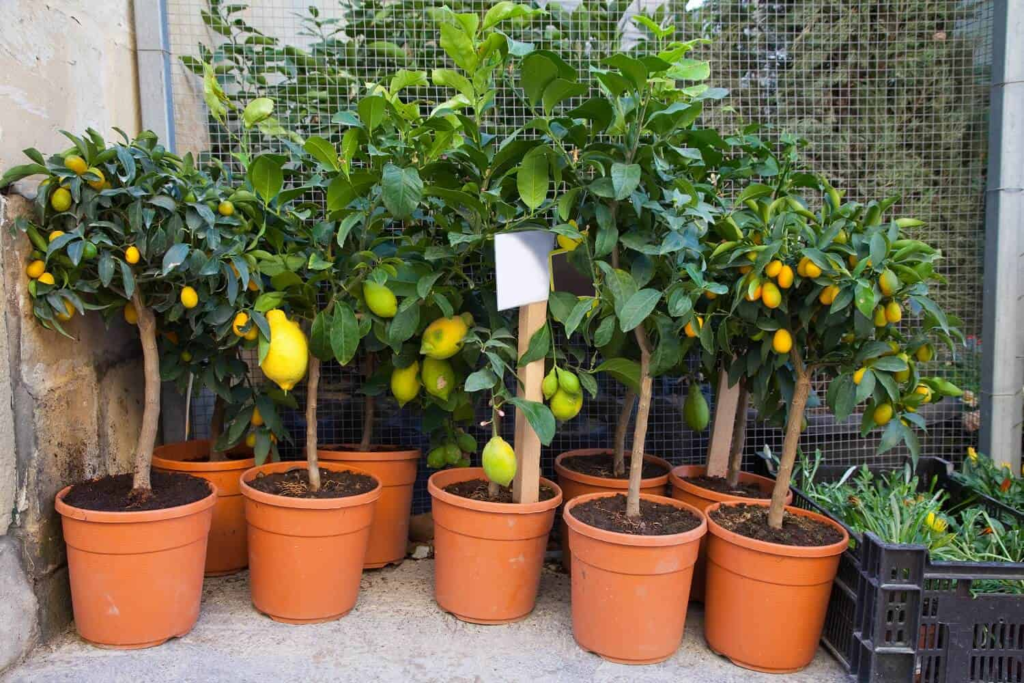
Pruning Techniques
Proper pruning encourages health and productivity:
- Remove crossing or inward-growing branches
- Maintain open center for light penetration
- Cut back leggy growth to encourage bushiness
- Remove suckers from the base promptly
- Sanitize tools between cuts to prevent disease spread
Winter Protection
For trees in marginal growing zones:
- Apply 2-3 inches of mulch at base (keep away from trunk)
- String outdoor lights for minimal heat
- Cover with frost cloth during freezes
- Move container plants indoors or to protected area
- Reduce watering in winter
Harvesting Your First Lemons
After years of care, the rewarding moment arrives:
- First flowers appear around years 3-6
- Allow fruit to fully develop color before harvesting
- Test ripeness by giving a gentle twist—ripe fruit detaches easily
- Harvest with clean pruning shears to avoid stem damage
- Expect modest yields from young trees
Comparing Seed-Grown vs. Grafted Lemon Trees
Understanding the differences helps set proper expectations:
- Time to fruit: Seed-grown: 3-6 years | Grafted: 2-3 years
- Disease resistance: Seed-grown: Varies | Grafted: Selected for resistance
- Size control: Seed-grown: Natural size | Grafted: Can be dwarfing rootstock
- Fruit quality: Seed-grown: Unpredictable | Grafted: Consistent with parent
- Cold hardiness: Seed-grown: Usually less hardy | Grafted: Can be improved with hardy rootstock
Lemon Tree Economics in the US Market
For those considering commercial production:
The US lemon market is primarily dominated by California and Arizona production, with Florida focusing more on other citrus varieties. According to the USDA’s National Agricultural Statistics Service, the 2023 lemon crop value exceeded $700 million.
Home-grown lemons can provide significant savings over store-bought organic lemons, which often retail for $1-2 each. A mature backyard lemon tree can produce 100-200 lemons annually, representing $100-400 in potential savings.
Conclusion: The Rewarding Journey of Growing Lemons from Seed
Growing a lemon tree from seed requires patience but offers unmatched satisfaction. From the moment your seedling first emerges to the day you harvest your first home-grown lemon, the process connects you deeply with the natural cycles of growth and fruiting.
Remember that each seed-grown tree is genetically unique—a living legacy in your garden. Even if fruiting takes years, the fragrant blossoms, glossy evergreen foliage, and the pure joy of nurturing a tree from seed make the journey worthwhile.
Whether you’re growing indoors in a small apartment or planning a backyard citrus grove, the techniques in this guide will help you successfully raise healthy, vibrant lemon trees from humble seeds—proving that sometimes the sweetest rewards come from the sourest fruits!
